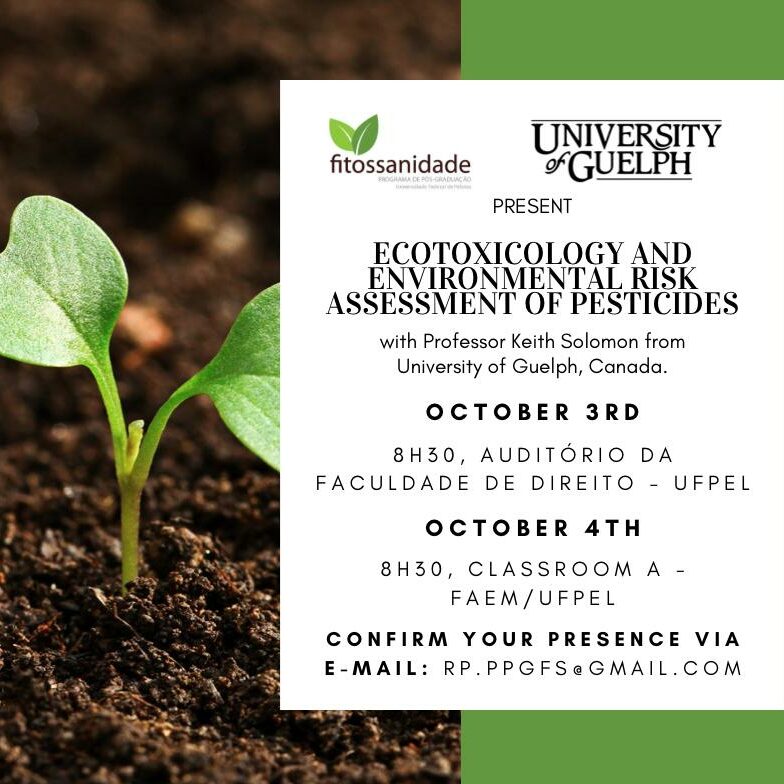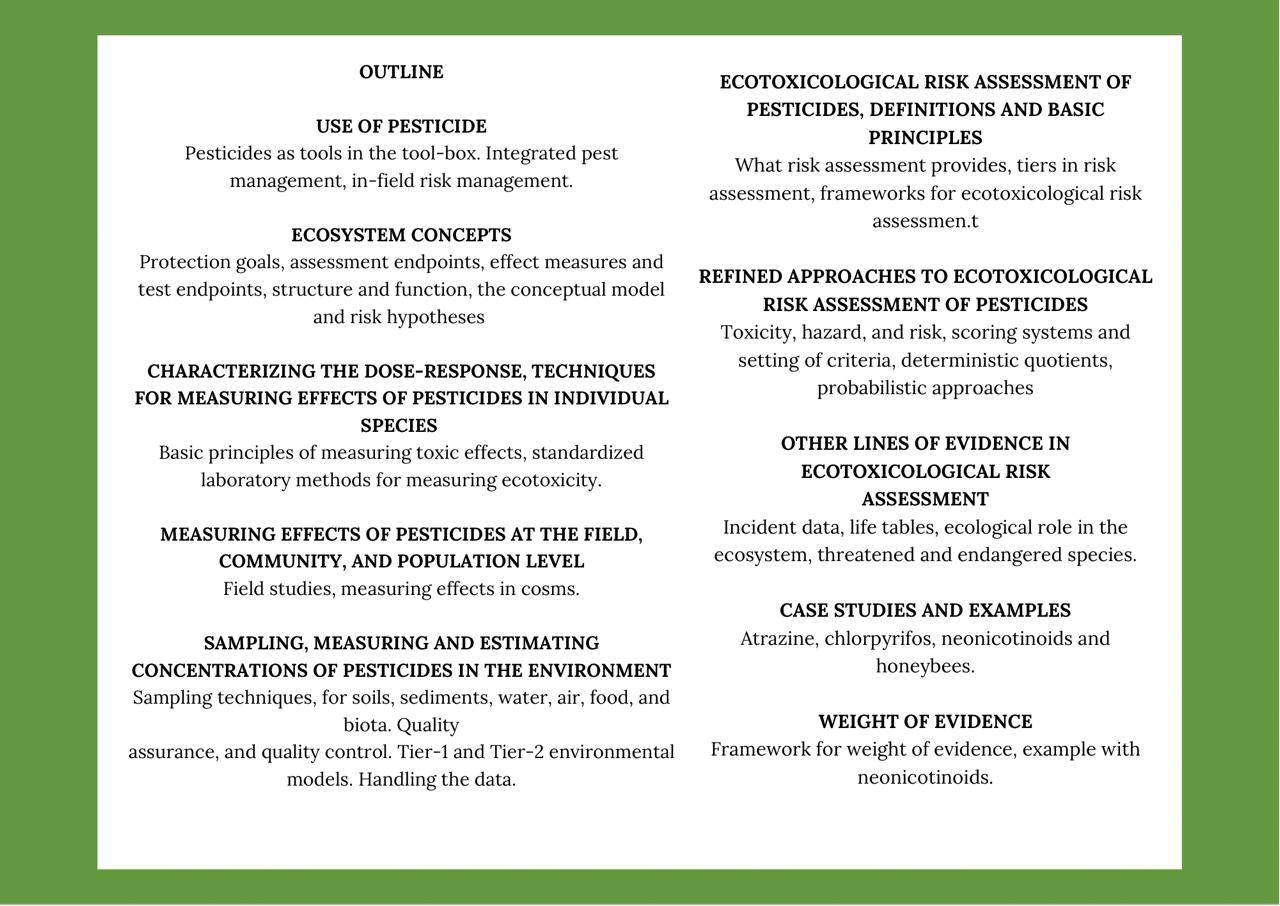Ecotoxicology and environmental risk assessment of pesticides



Prof. Keith Solomon
University of Guelph, Canada
Date: October 3rd and 4th
Outline
Use of pesticide
Pesticides as tools in the tool-box. Integrated pest management, in-field risk management.
Ecosystem concepts
Protection goals, assessment endpoints, effect measures and test endpoints, structure and function, the conceptual model and risk hypotheses.
Characterizing the dose-response, techniques for measuring effects of pesticides in individual species
Basic principles of measuring toxic effects, standardized laboratory methods for measuring eco toxicity.
Measuring effects of pesticides at the field, community, and population level
Field studies, measuring effects in cosms.
Sampling, measuring and estimating concentrations of pesticides in the environment
Sampling techniques, for soils, sediments, water, air, food and biota. Quality assurance and quality control. Tier-1 and tier-2 environmental models. Handling the data.
Ecotoxicological risk assessment of pesticides, definition and basic principles
What risk assessment provides, tiers in risk assessment, frameworks for ecotoxicological risk assessment.
Refined approaches to ecotoxicological risk assessment of pesticides
Toxicity, hazard and risk, scoring systems and setting of criteria, deterministic quotients, probabilistic approaches.
Other lines of evidence in ecotoxicological risk assessment
Incident data, life tables, ecological role in the ecosystem, threatened and endangered species.
Case studies and examples
Atrazine, chlorpyrifos, neonicotinoids and honeybees.
Weight of evidence
Framework for weight of evidence, example with neonicotinoids.